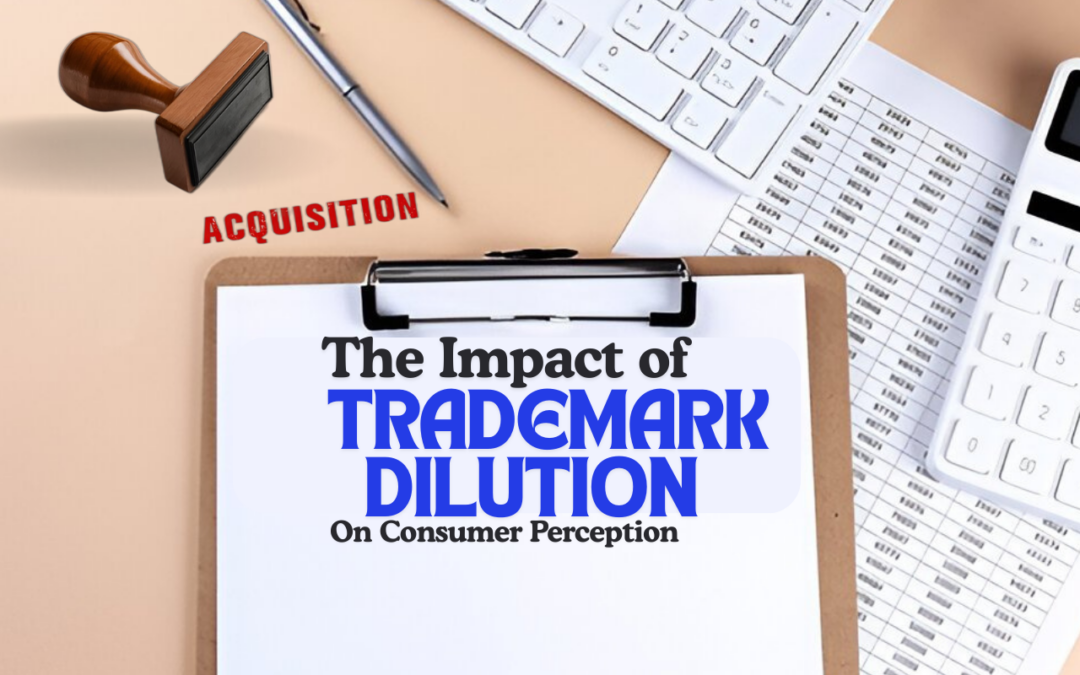In today’s competitive marketplace, brands strive to create a strong identity that resonates with consumers. However, the threat of trademark dilution poses a significant risk to this identity. Trademark dilution occurs when a brand’s distinctiveness is weakened due to the unauthorized use of a similar mark, regardless of whether there is confusion about the source of the products. This phenomenon can have profound implications for brand reputation and consumer trust.
Understanding Trademark Dilution
Trademark dilution is primarily classified into two types: blurring and tarnishment. Blurring occurs when the distinctiveness of a famous mark is impaired, while tarnishment involves the association of a famous mark with inferior or unsavory products. Both types can erode the value of a brand and alter consumer perception.
The Impact on Brand Reputation
- Loss of Distinctiveness: When a trademark is diluted, it loses its unique identity in the minds of consumers. This can lead to confusion and uncertainty about the brand’s quality and reliability. Research indicates that consumers are less likely to trust a brand that appears to have a diluted trademark. A study conducted by the Journal of Consumer Research found that consumers perceive brands with diluted trademarks as less innovative and of lower quality compared to those with strong, distinctive marks.
- Brand Loyalty Erosion: Trademark dilution can undermine brand loyalty. Consumers often form emotional connections with brands they trust. When a brand’s identity is compromised, this connection can weaken, leading to diminished consumer loyalty. A classic case illustrating this is Kenner Products Co. v. Rose Art Industries, Inc., where the court found that the use of the “Easy-Bake” name by another company diluted the brand’s identity, impacting consumer perception and loyalty.
- Negative Associations: In cases of tarnishment, a brand can be associated with negative or inappropriate products. This association can lead to consumer backlash and a significant decline in brand reputation. For instance, the use of the “Budweiser” name in a parody beer brand diluted its positive reputation and led to a consumer perception shift, associating it with lower quality.
Consumer Trust and Its Importance
Consumer trust is a critical asset for any brand, impacting purchasing decisions and long-term success. Trademark dilution can significantly affect this trust:
- Perceived Quality: When consumers perceive a brand as less distinctive due to dilution, their perception of quality diminishes. A Harvard Business Review study revealed that consumers are willing to pay more for brands they perceive as distinct and of high quality. Dilution undermines this perception, leading to reduced sales and market share.
- Increased Skepticism: As consumers encounter more brands that resemble their favorites due to dilution, skepticism can arise. They may question the authenticity of products, leading to hesitation in purchasing. For example, when Starbucks faced dilution issues with similar coffee shop names, consumer confidence in the brand was temporarily shaken, impacting foot traffic in some locations.
- Impact on Future Marketing: Brands with diluted trademarks may find it more challenging to launch new products or enter new markets. The loss of distinctiveness can hinder marketing efforts and reduce the effectiveness of advertising campaigns. Research from the American Marketing Association shows that brands with strong trademarks are significantly more successful in brand extensions compared to those that suffer from dilution.
Real-World Case Examples
- Mattel, Inc. v. MCA Records, Inc.: This landmark case involved the use of the name “Barbie” in a song. While the court ruled in favor of MCA, the case highlighted the potential for trademark dilution as Mattel’s efforts to protect the Barbie brand were perceived as an attempt to control its identity, ultimately affecting consumer perception of the brand as overly protective and less relatable.
- Louis Vuitton Malletier v. Dooney & Bourke, Inc.: Louis Vuitton’s efforts to protect its trademark against a handbag brand were deemed necessary to maintain its luxury status. The court ruled that a similar design could dilute the luxury brand’s distinctiveness, reinforcing the importance of protecting trademarks to maintain consumer trust and brand reputation.
Trademark Dilution and International Law
Trademark dilution is not only a domestic concern; it also has significant implications in the realm of international law. Different countries approach trademark protection and dilution in varied ways, influenced by their respective legal systems and cultural contexts.
- International Treaties and Agreements: Treaties like the Paris Convention for the Protection of Industrial Property and the Agreement on Trade-Related Aspects of Intellectual Property Rights (TRIPS) provide a framework for international trademark protection. These agreements encourage member countries to protect famous trademarks from dilution.
- Global Enforcement Challenges: Despite these frameworks, enforcing trademark rights across borders can be complex. Variability in national laws can result in inconsistent protection levels. Brands operating internationally must be aware of local laws regarding trademark dilution to effectively safeguard their identities.
- Case Studies: High-profile cases, such as Gucci America, Inc. v. Wang Huoqing, highlight how international brands navigate trademark dilution claims in different jurisdictions. Gucci successfully argued against a Chinese manufacturer that used similar branding, emphasizing the importance of protecting brand reputation on a global scale.
Understanding the Fair Use Defense Against Trademark Dilution Claims
In trademark dilution cases, the fair use defense can play a crucial role. Fair use allows for the legitimate use of a trademark without infringing on its rights, often in the context of comparative advertising or commentary.
- Types of Fair Use:
- Descriptive Fair Use: This applies when a term is used descriptively rather than as a trademark. For instance, a company might refer to its products as “best-selling” in comparison to a famous brand without intending to cause confusion.
- Nominative Fair Use: This occurs when a trademark is used to refer to the trademarked product itself, such as using “Kleenex” to describe facial tissues in general. Courts often recognize this as a legitimate use, as it does not dilute the trademark’s distinctiveness.
- Legal Precedents: Cases like Mattel, Inc. v. MCA Records, Inc. have established important precedents regarding fair use. The court ruled that the use of “Barbie” in a song title did not constitute dilution because it was not used in a way that confused consumers or harmed the brand’s reputation.
How to Conduct a Trademark Dilution Risk Assessment for Your Brand
Conducting a trademark dilution risk assessment is essential for brands to proactively protect their trademarks. Here are steps to consider:
- Identify Key Trademarks: List all trademarks, logos, and brand elements that hold significant value for your company.
- Monitor Similar Marks: Regularly search for similar trademarks in your industry. This includes monitoring new applications and registrations that could pose a risk of dilution.
- Evaluate Market Presence: Analyze how your trademarks are perceived in the market. Surveys and consumer feedback can provide insight into brand recognition and potential dilution risks.
- Review Marketing Strategies: Ensure that your marketing strategies do not unintentionally blur or tarnish your trademarks. Maintain consistent branding across all platforms.
- Consult Legal Expertise: Work with trademark attorneys to understand the nuances of trademark law and to develop strategies to mitigate dilution risks effectively.
The Role of Social Media in Trademark Dilution
Social media has transformed how brands interact with consumers, but it also poses unique challenges for trademark protection:
- Rapid Spread of Information: Social media enables quick dissemination of content, increasing the risk of unauthorized use of trademarks. A single viral post can lead to widespread dilution.
- User-Generated Content: Consumers often create content that references brands, which can blur the lines of trademark ownership. Brands must monitor and manage user-generated content to prevent dilution.
- Brand Reputation Management: Companies must actively engage with consumers on social media to shape their brand narratives. A proactive approach can mitigate dilution effects by reinforcing the brand’s unique identity.
- Case Examples: Notable instances, such as the backlash against brands that fail to respond to unauthorized uses on platforms like Twitter and Instagram, highlight the necessity of maintaining an active and vigilant online presence.
Conclusion
Trademark dilution is a serious issue that can significantly impact consumer perception, brand reputation, and trust. Brands must actively monitor and protect their trademarks to mitigate the risks associated with dilution. By understanding the implications of trademark dilution and the importance of maintaining distinctiveness, brands can better navigate the complexities of today’s marketplace, ensuring they retain the trust and loyalty of their consumers. As businesses continue to evolve, the protection of trademarks will remain a critical aspect of brand strategy and consumer engagement.












